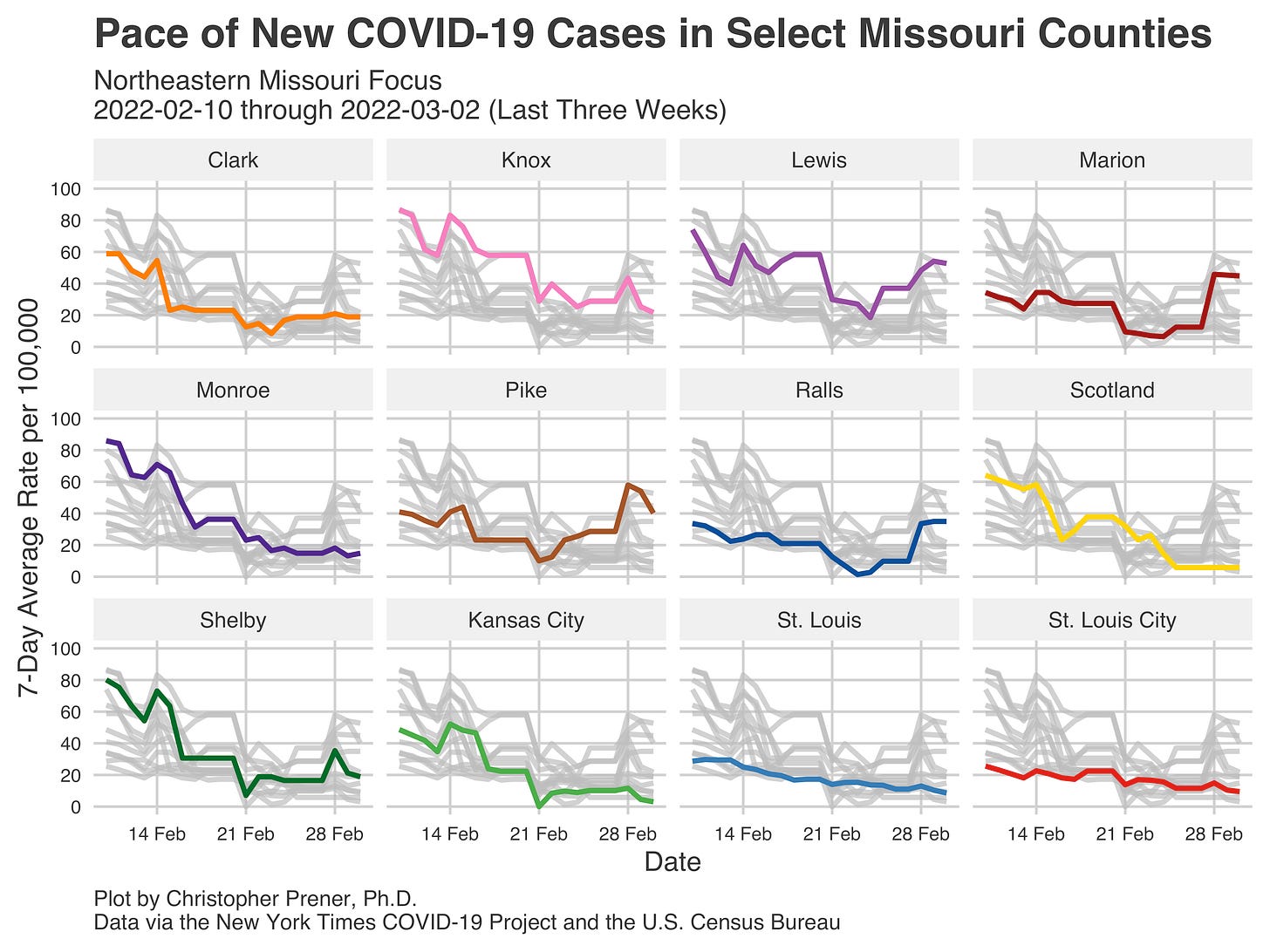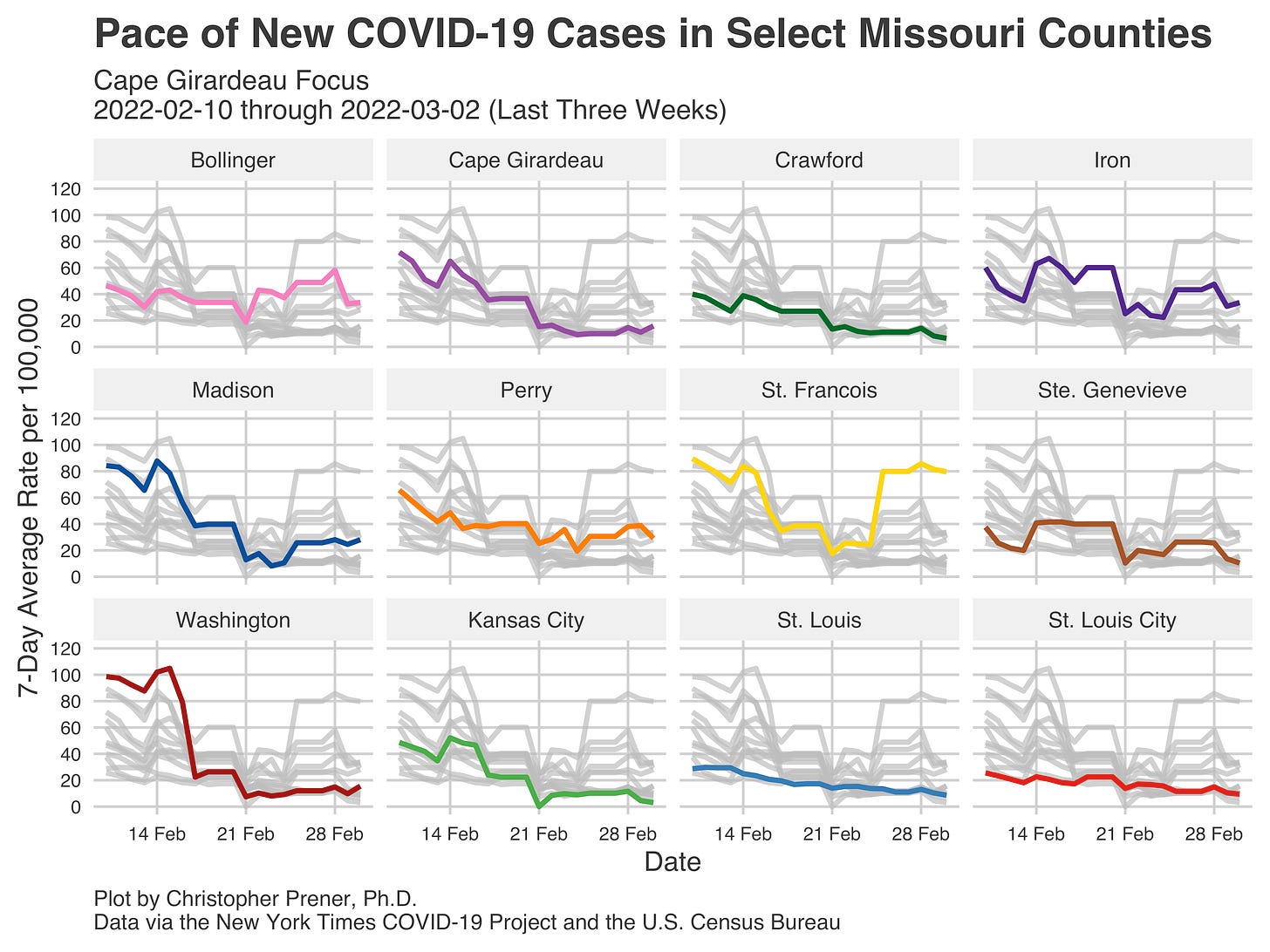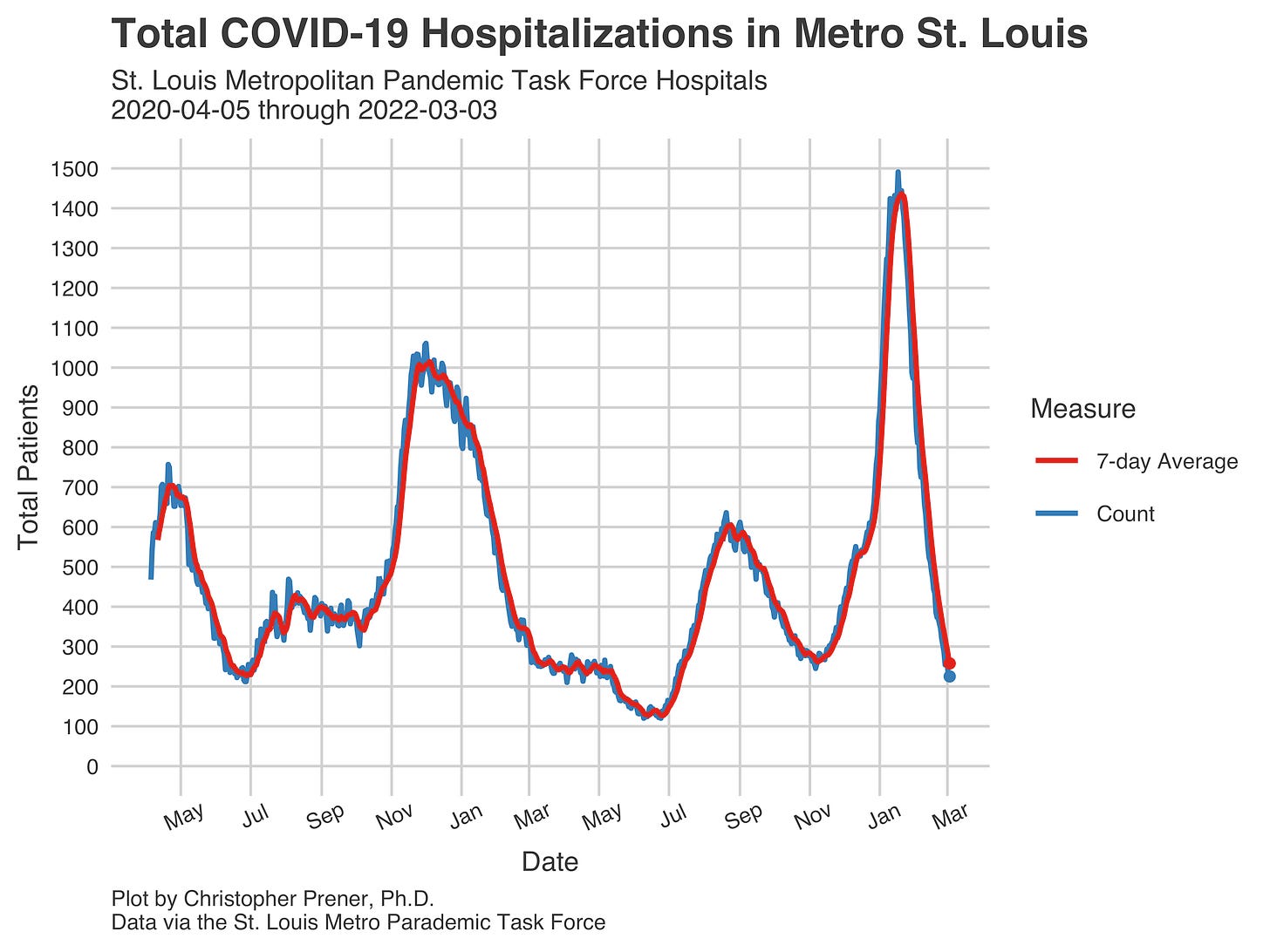Our data continue to provide reassuring news this week. Rates of new cases in many counties have now dropped to lows similar to last spring, before our initial signs of a Delta wave first materialized. Hospitalizations in St. Louis have also fallen quite dramatically. I want to remind folks that we have toasted the demise of COVID after every prior wave and been wrong every time. Enjoy the low rates now, but keep the pressure on policymakers to stockpile supplies, promote vaccination and boosters, and articulate on-ramps for nonpharmaceutical interventions. - Chris
COVID-19 by the Numbers
Total cases in MO: 1,414,729 (+5,508 from last Thursday)
7-day average of new cases per day in MO: 786.86 (-379.86 from last Thursday)
Counties with per capita rates (per 100,000) over 40 new cases per day this past week:
Linn (178.19 per 100,000), St. Francois (79.67), Mississippi (64.42), Lewis (52.71), Marion (44.84), and Pike (40.18)
Total deaths in MO: 19,272 (+623 from last Thursday)
7-day average of new deaths per day in MO: 89 (+74.71 from last Thursday)
Percent of all Missourians initiating vaccination: at least 58% (no change in previous three weeks)
Percent of all Missourians completing vaccination: at least 52% (no change in previous three weeks)
Case and mortality numbers are current as of Wednesday, March 2nd. Vaccination numbers are current as of Thursday, March 3rd. Additional statistics, maps, and plots are available on my COVID-19 tracking site.
Trends in the Past Week
The best news right now is the number of counties with rates below ten cases per 100,000 - a total of 42 as of yesterday. Another group of 46 counties has rates between ten and twenty cases per 100,000 per day on average. That gives us 88 out of 117 (75%) jurisdictions with strikingly low rates of new cases. On the flip side, only six counties have rates above 40 per 100,000 residents per day on average.
As you can see on the map, there are three clusters of higher rates of new cases. The most notable is in Northern Missouri, where Linn County has the highest rates of new cases in Missouri. However, that is due to one day of very high numbers - 149 on February 24th. Take that out, which we will tomorrow, and Linn’s rate will plummet back to baseline. I tend to think that this is a sign of a data reporting anomaly.
Likewise, the jumps in new cases in Northeastern Missouri are primarily tied to single-day dumps of new cases, unlike the typical numbers of new cases reported over the past two weeks. Also of note is that rates have climbed in counties like Lewis due to these one-day dumps but remain below where they were three weeks ago. But, again, I suspect these are related to reporting practices and not signs of a new set of spikes.
I have the same interpretation of increased rates in St. Francois County, which yet again revolve around a single large dump of new cases on February 25th. However, rates are elevated in several counties, including Bollinger, Iron, and Perry counties, which are higher than typical of Missouri counties as a whole. These do not seem to be anomalies but rather indicative of rates of community transmission that are higher than we would consider normal right now.
I consider all of this, even the higher rates in a few counties, good news. Rates are very low right now, and even when they are not, they largely seem to be due to reporting issues.
Likewise, I feel optimistic about hospitalizations in St. Louis, which have slipped down to a place at the high end of last spring’s numbers.
ICU numbers are even better than in-patient numbers overall. They are comparable to lows after the first and second waves. If they continue improving, we will see critical care rates among the lowest of the entire pandemic.
Another sign that change is afoot is in data slowdowns. Two data sources I rely on - federal hospitalization data and the City of St. Louis’s ZIP code data - have stopped receiving updates. I anticipate seeing more of these data shutdowns throughout the spring, especially if we do not have immediate concerns about a new variant that could cause a new spike. This prospect raises the possibility that the pandemic will end for many people not because transmission slips away but because we lose critical sources of data that make an invisible virus “real.”








